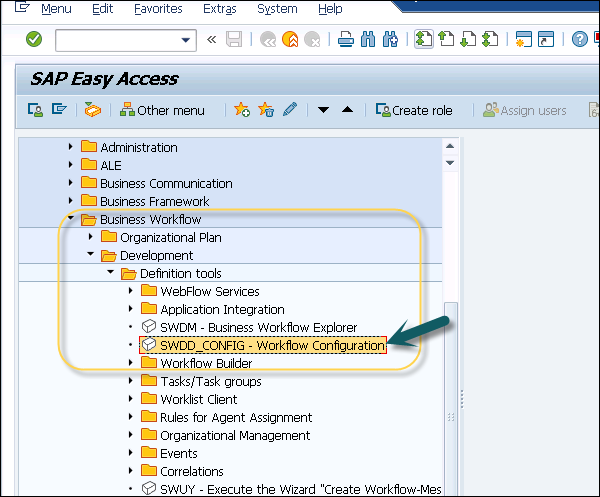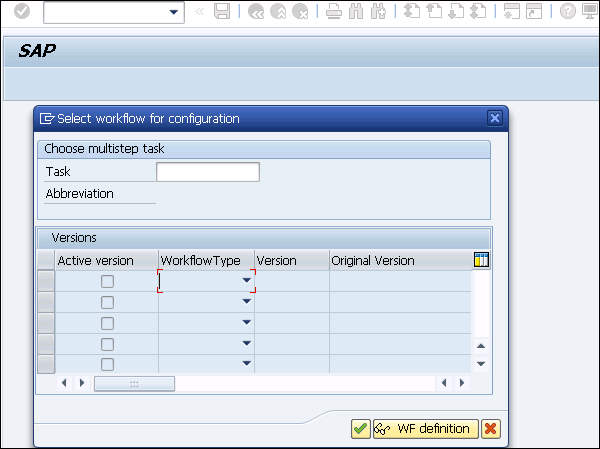
- SAP Business Workflow - Home
- Introduction
- Challenges
- Benefits/Features
- Layers
- Architecture
- Linking Process, Business Logic & People
- Business Object
- Start & Termination
- Condition Editor
- Administration
- Event Manager Administration
- Workflows With Errors
- Workflow Configuration
- Workflow Builder
- Import/Export
- Creating Steps
- Business Object Builder
- Abap Classes
- Extended Notifications
- Notifications Configuration
- Integration With Non-Sap Workflow Apps
- Universal Worklist
- Creating Workflows
- Archiving Workitems
- Using Swi2_Diag Diagnosis
- Using The Event Trace
- Transactions
- Function Modules
- Job Responsibilities
SAP Business - Workflow Configuration
In SAP Workflow, you can create a runtime definition of SAP workflows. These configurations are evaluated when workflows are executed. You can configure the following steps −
- Activity
- User decision
- Document from the template
- Wait
For each workflow definition, you can create a separate workflow configuration. You can activate a workflow configuration separately and when a workflow is run, it checks for the activated workflow configuration.
Note − Data in the workflow configuration always take precedence from data in the workflow definition.
To start the Workflow configuration, navigate to Tools → Business Workflow → Development → Definition Tools → Workflow Configuration.
Or use T-code: SWDD_CONFIG

This opens the window with the name - Process Workflow Configuration. You have to double-click on a step in the workflow definition to display the step definition to enter the values. When the workflow is executed, these values are then used at runtime instead of the values mentioned in the definition of the workflow.

When a workflow configuration is saved, it is by default active. You can also delete a configuration by navigating to Configuration → Delete.

SAP Note while using Workflow Configuration from Easy Access
You can open the workflow configuration of the open workflow directly from the Workflow Builder.
In the workflow configuration, you can adapt a workflow individually without changing the workflow itself. One use of the workflow configuration is for workflows supplied by SAP, which you cannot edit yourself. In the workflow configuration, you can make specifications in the selected input fields, which are given priority in the evaluation during execution.
For example, you can adapt the selection of the responsible agents or the message recipients for completion of all the steps. You can also adapt a defined deadline monitoring to meet your own requirements.
Note − Workflow configuration is specific to the client in SAP system. It is also possible to transport a workflow definition from one client to another client - only active version of workflow definition is transported. In case WF definition exists in the target system with the same version number and no workflows are running, then it is overwritten, otherwise it is saved with the free version number.